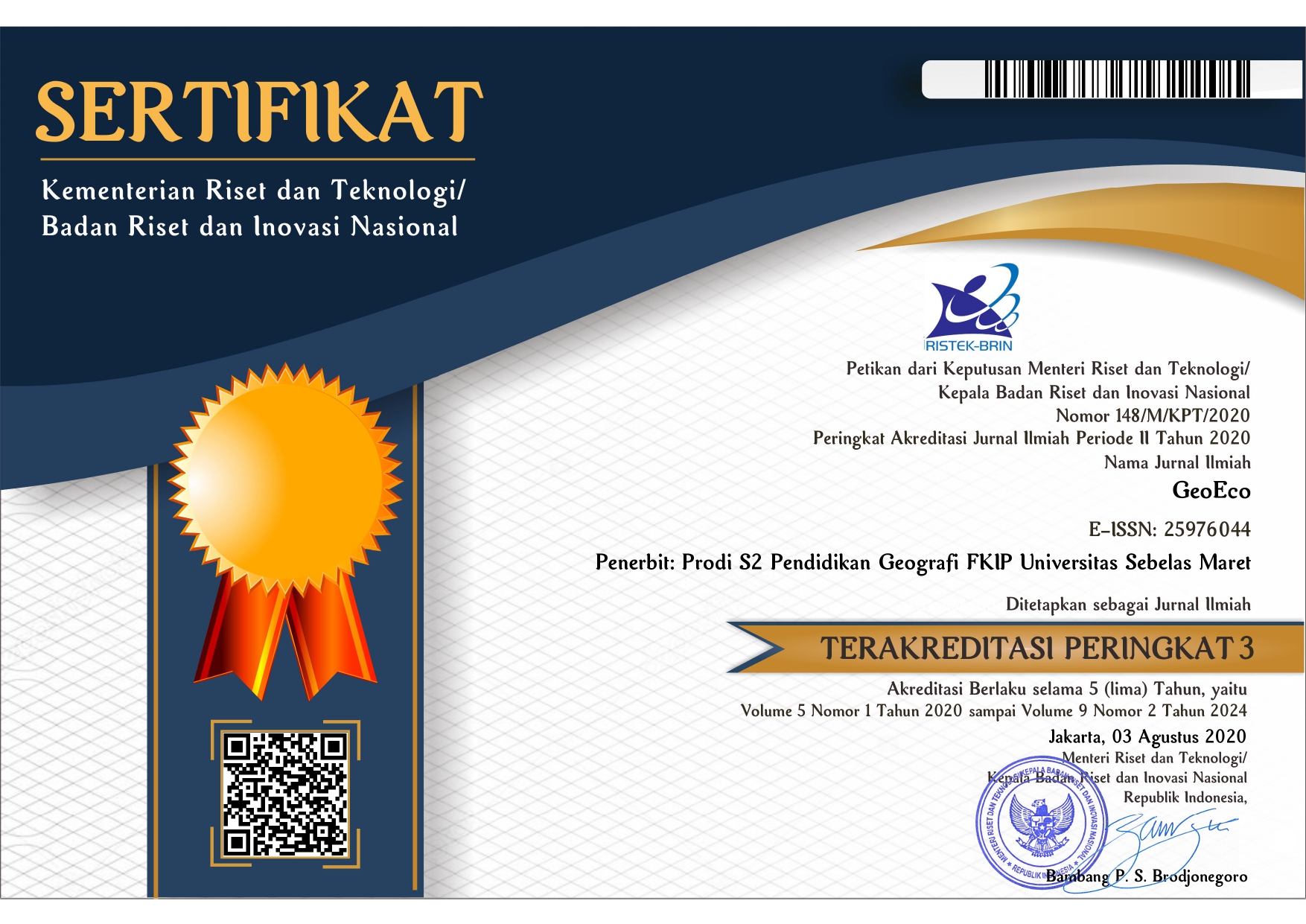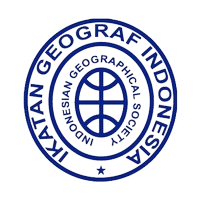THE LEARNING MEDIA DEVELOPMENT OF INTERACTIVE MULTIMEDIA BASED E-LEARNING TO IMPROVE STUDENTS’ LEARNING OUTCOME AND SPATIAL THINKING ABILITY OF X IIS STUDENTS IN SMA NEGERI 3 SRAGEN IN THE ACADEMIC YEAR OF 2017/2018
Abstract
This research aimed to (1) determine the students’ needs upon the learning media development of interactive multimedia-based E-Learning (2) develop the learning media of interactive multimedia-based E-Learning in the material of hydrosphere dynamics and its impact toward life (3) determine the appropriateness of the developed learning media of interactive multimedia-based E-Learning (4) determine the effectiveness of the learning media of interactive multimedia-based E-Learning to improve the students’ learning outcome and spatial thinking ability. The method used in this research was research and development method using the development model developed by Dick and Carey. The data collection techniques used were questionnaire/needs analysis questionnaire, validation sheet of material expert, media expert, teacher, students’ try out questionnaire, test, and documentation. The learning media product development of interactive-multimedia-based E-Learning used Adobe Flash program designed and interactively-presented (self-service) and equipped with supporting materials in the form of pictures, maps, videos, and texts. The learning media of interactive-multimedia-based E-Learning was categorized as appropriate based on the evaluation of material expert and media expert who gave the score of 5 (a very good category in the Likert scale), and also the evaluation from teacher and students’ try out which had the score of 4 (good category in Likert scale). The learning media of interactive-multimedia-based E-Learning was more effective to improve the students’ learning outcome and spatial thinking ability based on the class mean which was higher in the pre-test and post-test results which was improved from 65,8 to 78,4 compared to the Power Point media in which the class mean of pre-test result was 64,4 and the post-test result was 75,2 while the students’ spatial thinking ability was improved especially in the region aspect.
Keywords : E-Learning, Interactive Multimedia, Spatial Thinking Ability
Full Text:
PDFRefbacks
- There are currently no refbacks.












.png)

